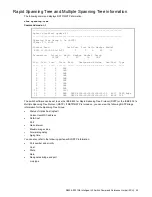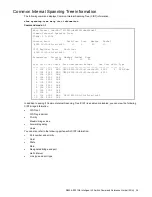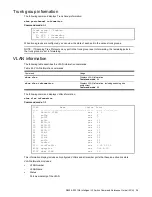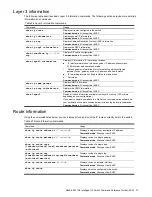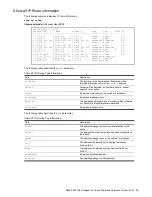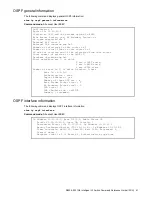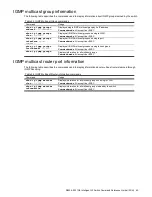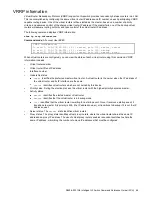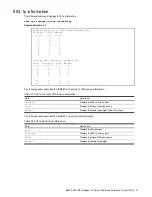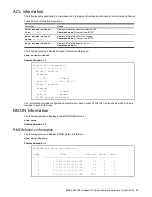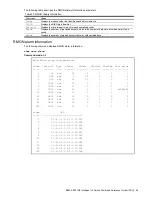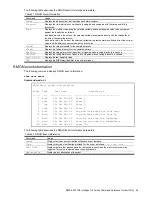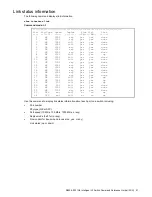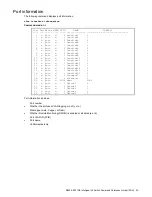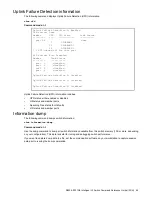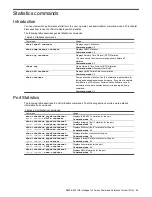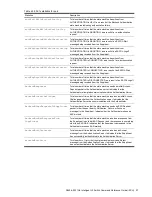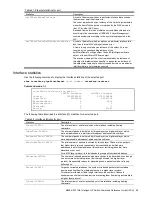
N8406-023 1Gb Intelligent L3 Switch Command Reference Guide (ISCLI) 46
VRRP information
Virtual Router Redundancy Protocol (VRRP) support on this switch provides redundancy between routers in a LAN.
This is accomplished by configuring the same virtual router IP address and ID number on each participating VRRP-
capable routing device. One of the virtual routers is then elected as the master, based on a number of priority
criteria, and assumes control of the shared virtual router IP address. If the master fails, one of the backup virtual
routers will assume routing authority and take control of the virtual router IP address.
The following command displays VRRP information:
show ip vrrp information
Command mode:
All except User EXEC
VRRP informa
tion:
1: vrid 2, 205.178.18.210, if 1, renter, prio 100, master, server
2: vrid 1, 205.178.18.202, if 1, renter, prio 100, backup
3: vrid 3, 205.178.18.204, if 1, renter, prio 100, master, proxy
When virtual routers are configured, you can view the status of each virtual router using this command. VRRP
information includes:
Virtual router number
Virtual router ID and IP address
Interface number
Ownership status
owner
identifies the preferred master virtual router. A virtual router is the owner when the IP address of
the virtual router and its IP interface are the same.
renter
identifies virtual routers which are not owned by this device
Priority value. During the election process, the virtual router with the highest priority becomes master.
Activity status
master
identifies the elected master virtual router.
backup
identifies that the virtual router is in backup mode.
init
identifies that the virtual router is waiting for a startup event. Once it receives a startup event, it
transitions to master if its priority is 255, (the IP address owner), or transitions to backup if it is not the IP
address owner.
Server status. The
server
state identifies virtual routers.
Proxy status. The proxy state identifies virtual proxy routers, where the virtual router shares the same IP
address as a proxy IP address. The use of virtual proxy routers enables redundant switches to share the
same IP address, minimizing the number of unique IP addresses that must be configured.

